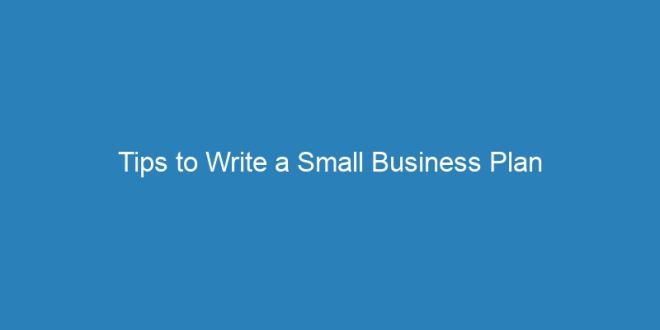Tips to Write a Small Business Plan
All small businesses, large and small, begin with an idea. But only when this idea is placed down on paper and conceptualized into a it becomes a possibility. In this series of beginner’s guide to small business plan with small business plan templates, we will discuss nine small business plan types and will also discuss why using them is so helpful. Most small businesses start with one or two ideas but it is important that they grow from these initial ideas. In this first series of beginner’s guide to small business plan templates, we will discuss the nine basic, small business plan types.

This is probably the most popular of all small business plan types and is ideal for anyone wanting to start out in their own business. The Startup Business Opportunity is a set of steps that will lay out how you will start your business. You will need to provide a complete description of your business structure, marketing plan, financial statements, and more. As you continue to develop your startup business idea, you will be able to add in other elements as you progress through your plans.
This is one of the most popular small business plan examples. Most startup plans today center around one or two industries. One example might be a software company that is looking to hire IT professionals. In this template, you will need to include information about the new business model you are going to follow, the products you will sell, your target customer, and more. This can be extremely helpful for someone just starting out, since you can use it to research the industry and to gather information to help you decide on a direction for your new venture.
This template is used for many small businesses. It is also one of the most flexible, as it can be modified to fit the needs of any business. For example, if you are just getting started with a small business, you may want to consider starting with the Lake Como area. If you are interested in diversifying into other areas, you could adapt this template to fit the needs of any city, town, or region.
In order to complete the small business plan, you will need to include an executive summary. This is written to give everyone involved a general idea of what the business model will be, and what they hope to accomplish within the first year. Since this will be the most recent chapter in your strategy, you will need to emphasize what you hope to accomplish here, as well as what you expect to avoid in this area. For example, you should emphasize that your goal will not be to double sales, but to achieve steady growth in your business model.
Another thing you should do in your executive summary is to explain why you chose to start your business. You must demonstrate why your company is different from all of the other similar businesses that have come before. For example, if you start-up a business that makes window blinds, you would not use a similar description as the one that describes a small business plan that makes glass work for windows. In fact, the exact type of description that you use must be one that uniquely identifies your business. In fact, you should write this section entirely from the perspective of your target market.
The last thing you should do in your executive summary is to describe your financial projections for your small business plan. This section is not necessary for most business plans, however, it is important to include financial projections because they are what people understand when they are talking to you about your business. For example, if you start-up a business that makes window blinds, you would not expect anyone to talk about the possibility of selling them window blinds on a weekly basis. However, if you provide financial projections, people will understand how you intend to sustain your business and hopefully invest money with you.
Finally, you should end your executive summary with what is known as an attention grabber. This is typically something that draws attention to your small business plan so that interested investors can read it. In fact, you can use headlines as part of the attention grabber and then build upon the headline in a manner that you want the rest of the text to relate back to your business. You can use bullet points as well or you can simply leave the paragraph to the last word.
 KRETENG.COM Website Review Bisnis, Tempat dan Harga Produk Terbaik di Indonesia
KRETENG.COM Website Review Bisnis, Tempat dan Harga Produk Terbaik di Indonesia
